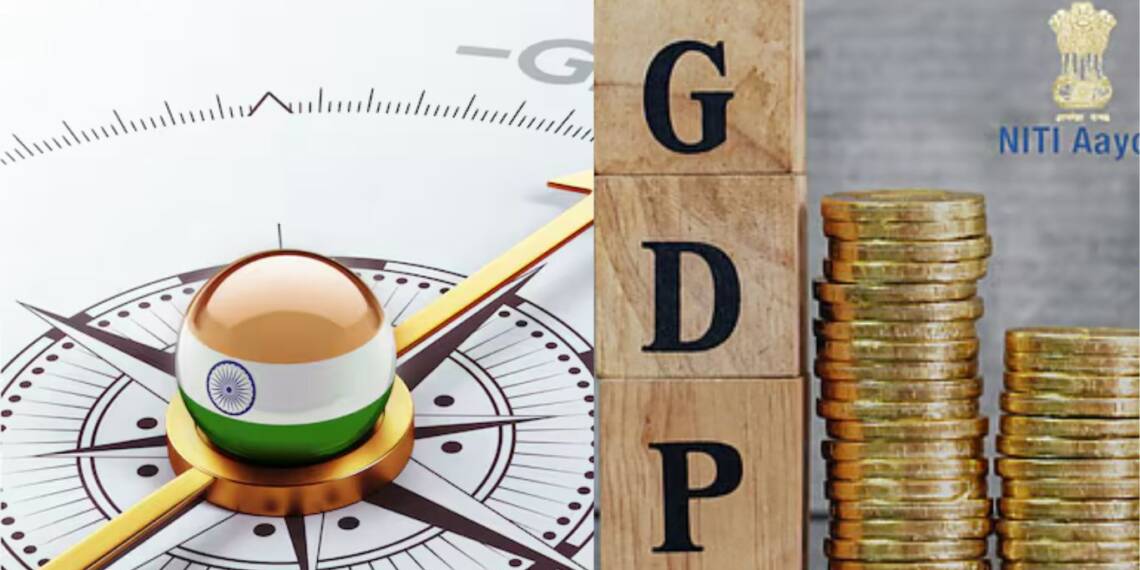India has officially overtaken Japan to become the fourth-largest economy in the world, according to NITI Aayog CEO B.V.R. Subrahmanyam. Once a dream for India to move ahead of Japan has come true. Speaking at an event, Subrahmanyam declared, “We are a USD 4 trillion economy as I speak. India has now moved past Japan and is now behind only the United States, China, and Germany.”
This major milestone marks a significant moment in India’s economic journey, especially considering that just over a decade ago, India was grouped with the “Fragile Five” — a term used to describe economies that were considered weak and unstable. From there, to now being among the top four economies globally, India’s rise has been both remarkable and strategic.
IMF Confirms India’s Position
Subrahmanyam’s statement is backed by data from the International Monetary Fund (IMF). According to its World Economic Outlook (WEO) report released in April 2025, India’s nominal GDP is projected to reach USD 4.19 trillion in 2025, slightly ahead of Japan, whose GDP is also estimated at USD 4.187 trillion. This official confirmation has brought cheer across policy circles, business communities, and citizens alike.
The IMF also pointed out that India’s per capita income has doubled over the past decade, from USD 1,438 in 2013-14 to USD 2,880 in 2025. While this number still lags behind developed countries, it reflects strong progress in raising living standards, especially in rural and semi-urban areas.
Growth Drivers: Rural Consumption and Economic Reforms
Despite a slight downward revision in the growth forecast — from 6.5% to 6.2% for 2025-26 — the IMF remains optimistic about India’s economic trajectory. The slowdown is attributed to global trade tensions and economic uncertainties, but India’s domestic demand, especially rural consumption, continues to offer strong support to the economy.
“India’s growth outlook remains relatively stable,” said the IMF, adding that structural reforms, improved governance, and a growing digital economy are key enablers of this resilience.
A Decade of Transformation
India’s rise to the fourth spot did not happen overnight. Over the past 10 years, consistent efforts in infrastructure development, ease of doing business, digitization, and targeted welfare programs have helped the country achieve high and inclusive growth.
Once part of the fragile five, India is now a case study in how emerging markets can transform themselves with the right policy framework, vision, and leadership.
The Vision Ahead: ‘Viksit Bharat @2047’
India’s ambition doesn’t stop at becoming the fourth-largest economy. The government has set its sights on becoming a developed nation by 2047, when India completes 100 years of independence. This vision is laid out in NITI Aayog’s comprehensive strategy paper titled “Viksit Rajya for Viksit Bharat @2047.”
According to the document, India aims to become a USD 30 trillion economy by 2047. To achieve this, a clear roadmap has been developed based on six key building blocks:
- Macro-Economic Goals and Strategy – Long-term economic planning, fiscal discipline, and stable inflation.
- Empowered Citizens – Improving human development indicators like health, education, and skill development.
- A Thriving and Sustainable Economy – Sustainable industrial growth, renewable energy expansion, and responsible use of resources.
- Technology and Innovation Leadership – Becoming a global hub for innovation, AI, and advanced manufacturing.
- A Global Leader (Vishwa Bandhu) – Promoting India’s global leadership in diplomacy, trade, and development cooperation.
- Enabling Factors – Governance, Security, and Justice – Reforms in judicial delivery, national security, and efficient governance.
Path to High-Income Status
According to the World Bank, a country is classified as “high-income” if it has a per capita income of over USD 14,005. India’s current per capita income is USD 2,880 — indicating there is still a long way to go. However, with sustained high growth, demographic advantages, and rising productivity, India has the potential to achieve this goal by 2047.
Global Implications
India’s economic rise carries significant geopolitical implications. As the fourth-largest economy, India will now have a stronger voice in global platforms like the G20, World Bank, and IMF. It will also play a bigger role in shaping international trade rules, climate negotiations, and security frameworks.
India’s economic strength is also expected to contribute positively to global growth. With the global growth forecast lowered to 2.8% for 2025, India’s stable 6.2% growth rate stands out and provides a much-needed boost to the global economy.
India’s leap to the fourth position in the global economy is a proud moment for the country and a validation of its development strategy. While challenges remain — such as inequality, job creation, and global headwinds — the path ahead looks promising. With continued reform, strategic investments, and people-centric development, India is well on its way to becoming a Viksit Bharat — a fully developed and prosperous nation — by 2047.








